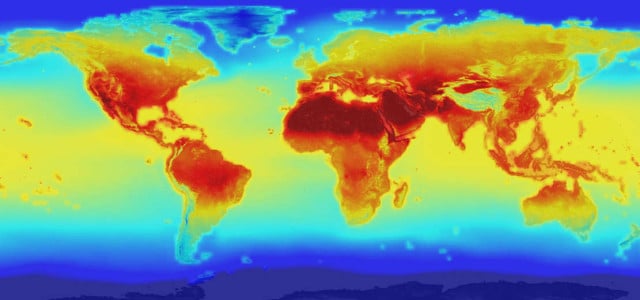NASA just releases climate change projections to offer forecasts for global temperature and precipitation changes.
Image credit NASA
NASA’s Global Climate Change Projections combining historical measurements with climate simulations models up to 2100.
NASA using the best available computer models, provides forecasts of how global temperature (shown above).
The data showing how temperature and rainfall patterns worldwide may change through the year 2100 because of growing concentrations of greenhouse gases in Earth’s atmosphere.
The dataset, which is available to the public, shows projected changes worldwide on a regional level in response to different scenarios of increasing carbon dioxide simulated by 21 climate models. The high-resolution data, which can be viewed on a daily timescale at the scale of individual cities and towns, will help scientists and planners conduct climate risk assessments to better understand local and global effects of hazards, such as severe drought, floods, heat waves and losses in agriculture productivity.
“NASA is in the business of taking what we’ve learned about our planet from space and creating new products that help us all safeguard our future,” said Ellen Stofan, NASA chief scientist. “With this new global dataset, people around the world have a valuable new tool to use in planning how to cope with a warming planet.”
The new dataset is the latest product from the NASA Earth Exchange (NEX), a big-data research platform within the NASA Advanced Supercomputing Center at the agency’s Ames Research Center in Moffett Field, California. In 2013, NEX released similar climate projection data for the continental United States that is being used to quantify climate risks to the nation’s agriculture, forests, rivers and cities.
Ramakrishna Nemani, NEX project scientist at Ames, said:
“This is a fundamental dataset for climate research and assessment with a wide range of applications. NASA continues to produce valuable community-based data products on the NEX platform to promote scientific collaboration, knowledge sharing, and research and development.”
NASA’s dataset can be downloaded here.
source NASA







Leave A Comment